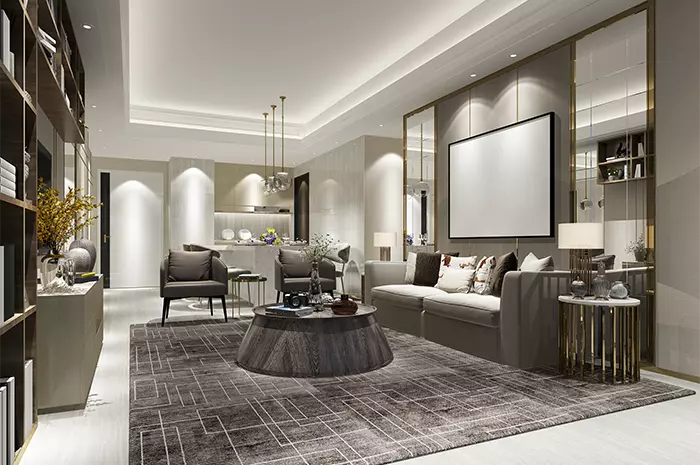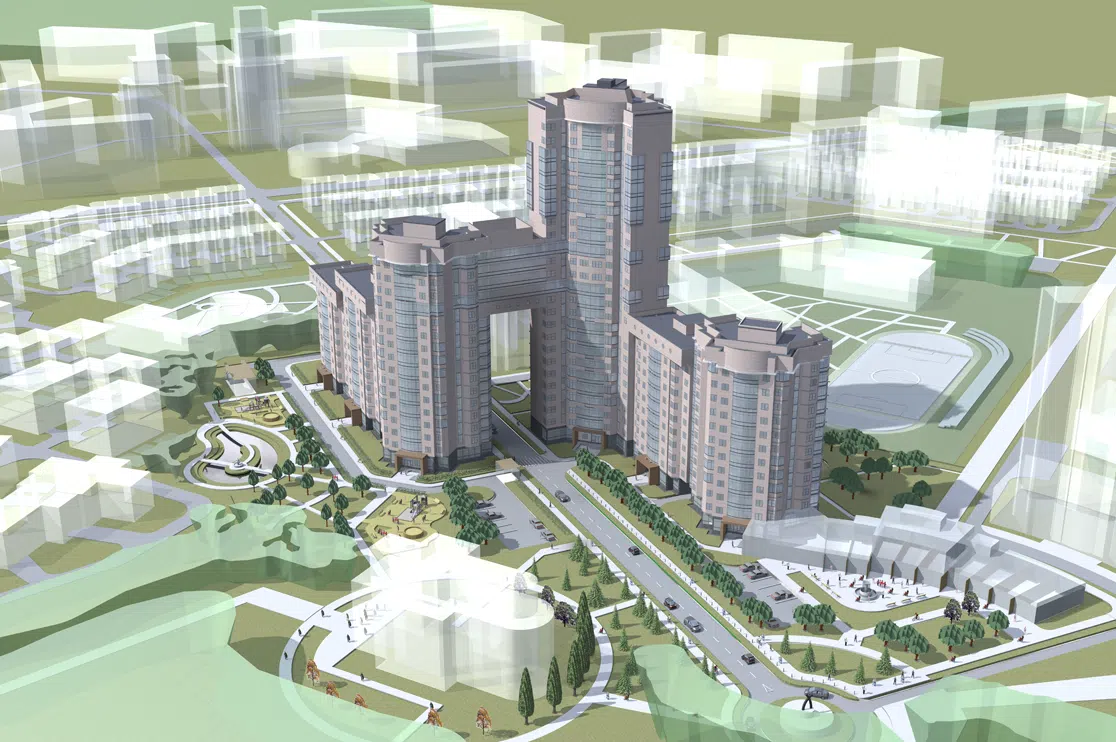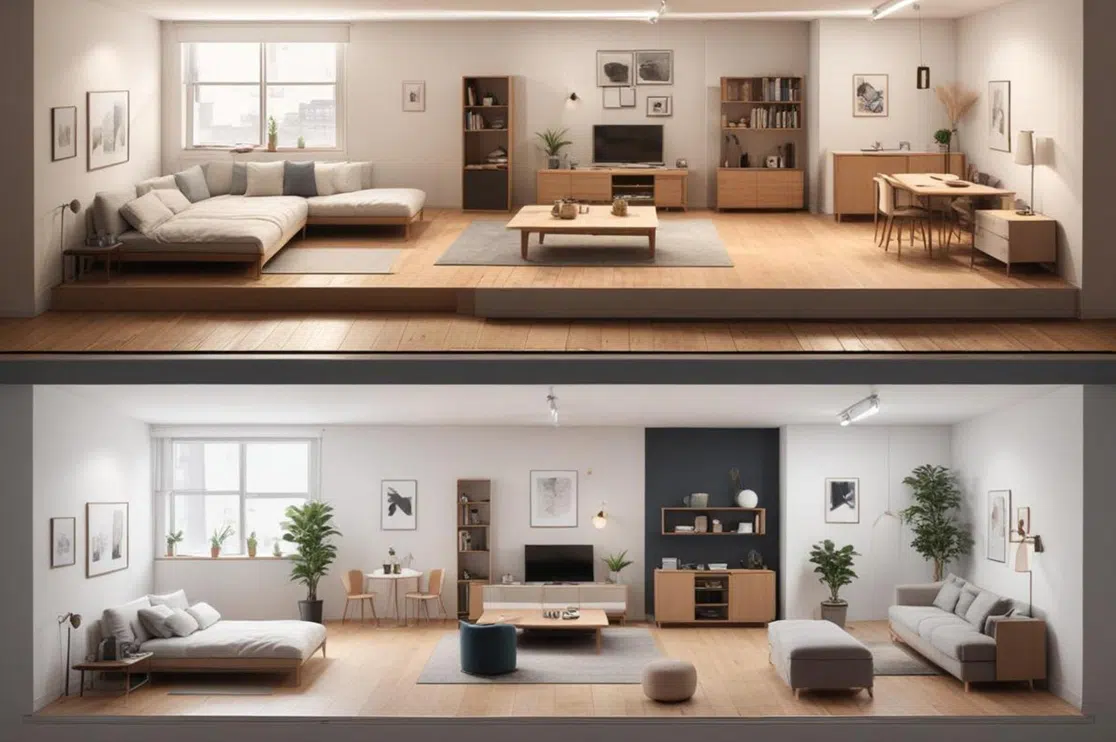An architectural visualization is not just a moving interpretation of a structure’s design.
Visualizations and walkthroughs are emotive, persuasive, and cinematic portrayals of what a structure would look like in front of your client, in the real world.
In short, you’re giving them a view of what they’re actually getting. Which means that this is an opportunity for investors and clients to create their first connection with the design before stepping foot in the building itself.
This is a responsibility that is not to be taken lightly.
People don’t buy products. They buy emotions and stories. And architectural visualization will let you tell that story better – that is, close more deals and attract more investors.
We will demonstrate three factors that will put your walkthrough a cut above the rest: camera movement, lighting, and setting.
Camera Movement
Camera movement is the central aspect of all 3D walkthroughs.
Don’t just think of it as a means of presenting the architecture; approach the situation as if you were a cinematographer.
Ask yourself how you can utilize movement in the shot to accentuate the structure’s strengths and reinforce the project’s overall vision.
This distinction is what separates a run-of-the-mill fly-through from a visual experience that will blow your audience away.
There are multiple ways of being creative with camera movement. One is to experiment with both translational and rotational movements, rather than continuous lateral advancement.
This creates a more dynamic exploration of the structure, which will keep the viewer curious about what they will discover next.
Keep in mind the applications of the shots you design. For example, aerial shots are an excellent method of creating a feeling of exhilaration and excitement. They are perfect for unveiling grandiose high rises and public installations.
Conversely, a well-placed tracking shot focusing on a single element can highlight the intimacy of the space and emphasize intricate details.
Another important feature of camera movement is the speed at which it progresses. Slow movement suggests magnitude and awe, as it urges the audience to take in every facet of the shot. Quicker movement suggests a sense of purpose and high technology, which suits more pragmatic, efficient design.
Points of Caution:
- Creativity will lead to an immersive architectural walkthrough video, but overly experimental camera movements will make the final product disjointed and distract people from the structure.
- It is preferable to always return the camera to a position at eye level (5–6 feet above the ground), as this evokes the experience of actually walking through the building and thus accurately conveys the building’s scale.
Lighting
Just like in a still frame rendering, there are plenty of different aspects of lighting in a 3D architectural visualization.
The positioning of the light source, the amount of light cast, time of day, and weather conditions all play a part in creating the ideal atmosphere.
Furthermore, the realism of all architectural visualization is highly dependent on lighting. Often, the more creative the lighting, the more natural the walkthrough will appear.
Because BluEnt understands the power of this technique, we work with the latest software & hardware and a trained eye to simulate real-world lighting. This will leave your audience with the impression that they witnessed a physical, existing building.
One way to achieve this is by using non-natural light sources such as streetlights or indoor lamps to illuminate a scene. This adds a unique layer of richness to interactive 3D walkthroughs as the camera movement changes where the light and shadows hit frame by frame.
Lighting is also your most effective tool for directing the eye in a given shot. Subtle spotlights or induced vignettes give structure and focus to a scene in a way that area light cannot achieve.
Points of Caution:
- While experimenting, be careful not to let the lighting eclipse the details of the design (i.e. if you cast a spotlight on a certain object, be wary of obscuring the other elements in the frame).
- For interior walkthroughs in particular, consider varying the amounts and types of light used in each area to give the viewer a cinematic yet comprehensive experience.
Setting
This technique adds to the overall realism and visual appeal of 3D fly-throughs as it allows the audience to fully immerse themselves in the experience beyond the structure itself.
The setting will provide references for scale and show how the structure will interact with real-world elements.
The emotive quality of a well-crafted setting works because of what the viewer feels based on the colour palette, concept, and dynamic elements (i.e. moving water, grass swaying in the breeze, walking pedestrians, birds flying in the sky, etc.) you choose.
Is the audience supposed to feel calm inside the building? In awe of its imposing exterior design? Humbled by the importance of the operations within? These are reactions that can be evoked effectively through setting.
Similarly to lighting, you can also orient your scenery around the structure to subtly draw the viewer’s eye to certain details that your clients would like to emphasize. Delicate framing can be created through shapes and indirect borders that emerge in different shots as a result of camera movement.
As an international company, one way that BluEnt produces strategic settings is by working with image inputs from our clients to truly recreate local landscapes in our walkthroughs.
Points of Caution:
- Setting is something to discuss heavily with your clients, as it has an enormous impact on the overall presentation of the project.
- Be wary of making your setting extravagant or interactive to the point that it distracts from the structure itself.
We hope that this article has shed some light on the process behind creating a walkthrough that leaves audiences anticipating your structure’s next stage of development.
And if you’d like a visualization without the hassle of making one yourself, well, you needn’t look further.
BluEnt is thoroughly experienced in 3D visualization and walkthroughs. Contact us now to get a photorealistic walkthrough that does everything we’ve covered in this article and more.
Maximum Value. Achieved.







 Architectural Rendering: Revolutionizing Urban Planning for Future Cities
Architectural Rendering: Revolutionizing Urban Planning for Future Cities  Real Estate Virtual Staging: Avoid These Mistakes to Sell Your Home Fast (With Pro Tips)
Real Estate Virtual Staging: Avoid These Mistakes to Sell Your Home Fast (With Pro Tips)  How Does 3D Rendering Help with Virtual Staging a House for Sale?
How Does 3D Rendering Help with Virtual Staging a House for Sale?  Best 3D Custom Wardrobe Designs for Your Bedroom
Best 3D Custom Wardrobe Designs for Your Bedroom